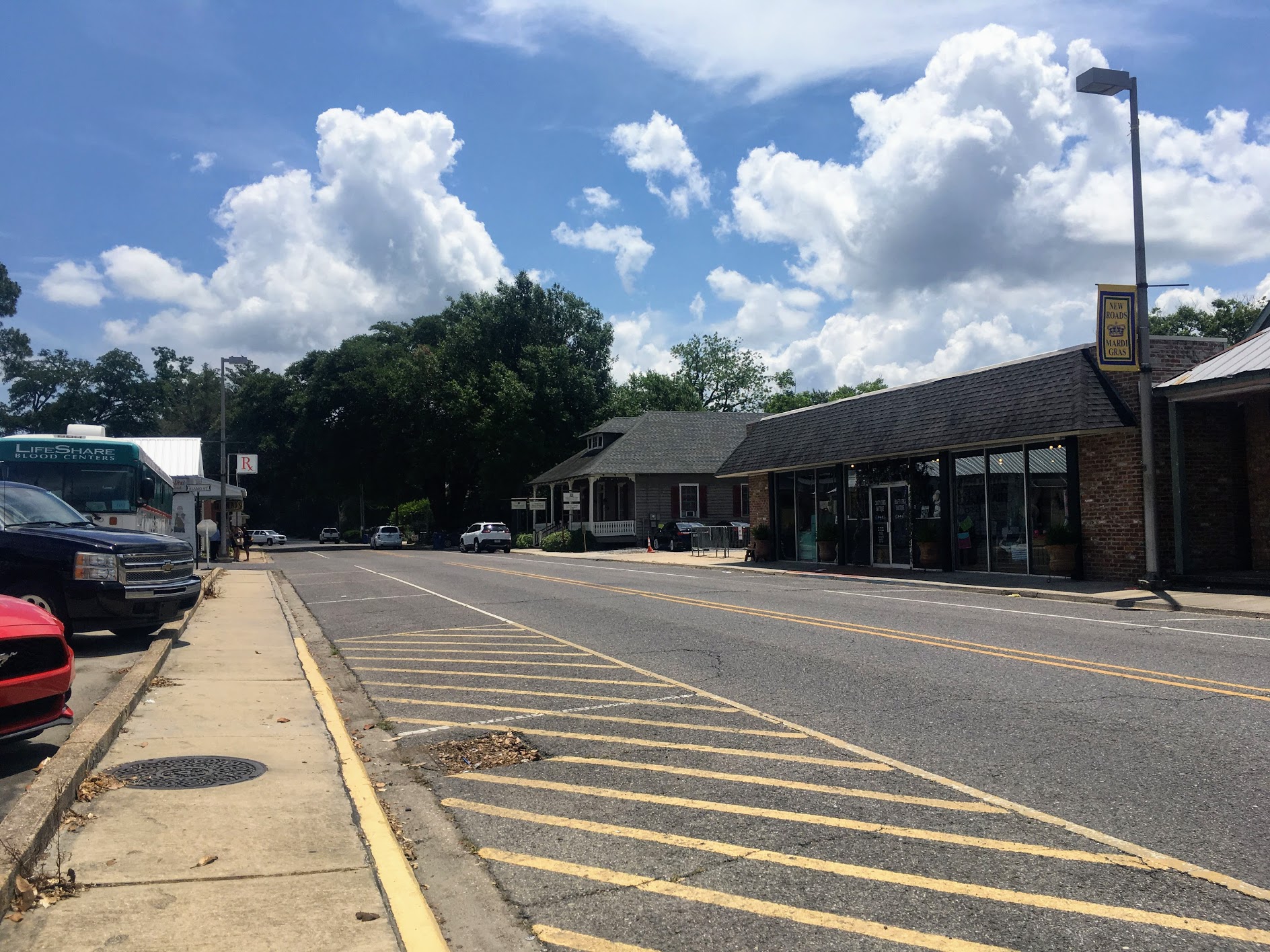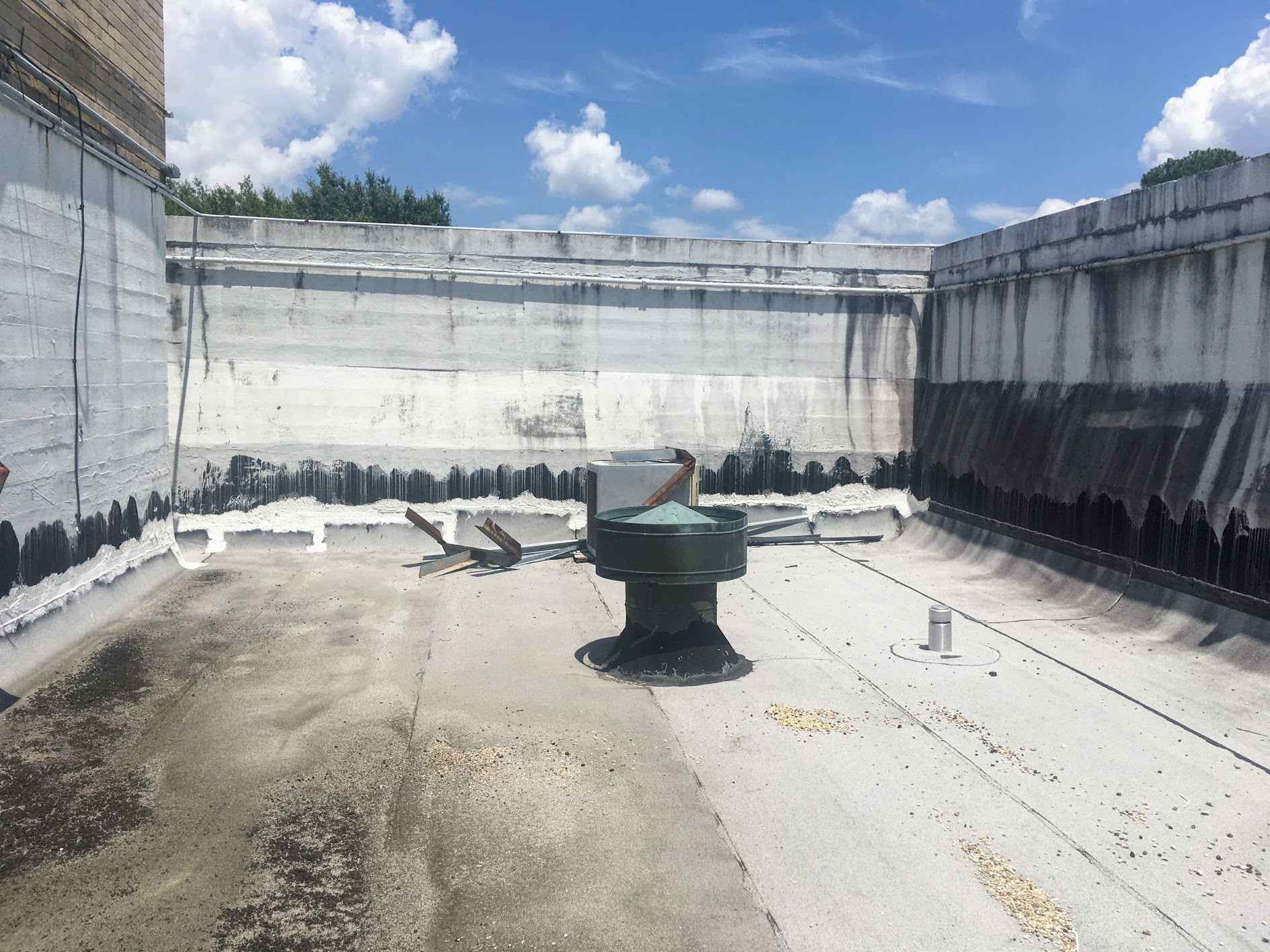In my last blog I talked about how New Orleans has a very distinct character. When we left the city, we left all that behind, but as we traveled further north in Louisiana, it felt like we were actually going further South - into the Deep South.
Our hotel was in Downtown Baton Rouge. It felt like the Finance District of Los Angeles with everyone coming in to work at nine and leaving the city to go home at five.
Empty.
While our base was in Baton Rouge, in actuality we spent most of our days exploring New Roads, a small one street town just a 40-minute car ride away from Baton Rouge. New Roads is the setting for the book we are reading, A Lesson Before Dying. Driving up to the town you pass beautiful estates, sitting on the False River. The estates all have a big house near the side of the road, and then land that just stretches out as far as the eye can see - sometimes filled with sugar cane crops, other times just grass. Driving past the estates I could imagine the big house overlooking the river, the rows and rows of sugar cane swaying in the breeze, and the slave quarters a ways off - their own small community. Once slavery was abolished, many slaves (now free blacks) still stayed on the plantation lands, now earning a small wage and having to pay rent – strapped to the same land and working for the same family as before the Civil War. Many of the estates in New Roads remained working farms up until the 1970s. The free blacks stayed in the same little houses and lived the same little lives. The slave quarters were now just “the quarter” and it was where Jefferson and Grant, the two main characters of the novel, were raised.
Once you pass all the estates and actually get into town, there are a few restaurants and stores, but it is mostly silent. The heat is oppressive and persuades most people to stay indoors.
When I was in New Roads, it felt like I was experiencing two sides of the same coin. There was so much kindness - true "Southern Hospitality" - that I had not experienced in New Orleans. A pharmacist took us on his boat for a ride down the river, and the sheriff of Pointe Coupee Parish (where New Roads resides) took time out of his busy day to show us country songs that he made in Nashville. Everyone was so gracious - such a Southern virtue. But grace is being benevolent to someone who has less power than you, who is lower than you, and it presupposes a hierarchy. That hierarchy, in which there is white, and there is not white, is the other side of the coin.
Three hundred years ago there was slavery. Two hundred years ago there were black codes and sharecropping. Then came Jim Crow, segregation, and the rebirth of the Ku Klux Klan. Redlining and the War on Drugs followed, and now the prison system is used as a legal framework to maintain that same hierarchy.
“The 13th amendment to the U.S. constitution makes it unconstitutional for anyone to be held as a slave. There are exceptions, including criminals.”
When black men make up an 40.2% of the U.S. prison population, but only account for an estimated 6.5% of the U.S. population, we must ask ourselves a question. If 1 in 3 Black males are expected to go to prison in their lifetime while only 1 in 17 white males are expected to go to prison in their lifetime, we must ask ourselves: is this deliberate?
“The prison industrial complex relies historically on the inheritances of slavery.”
When we were in New Roads, we visited the courthouse and jail because it is central to A Lesson Before Dying. The novel is about Jefferson, a black man - though he is only 21 and is more boy than man. He is caught in the wrong place at the wrong time and found guilty of a murder he did not commit. He is sentenced to death by electric chair.
The courthouse was on the first floor of the building. The jail, not a functioning jail anymore, was just used for storage and took up the second floor. We took an elevator to go up to see the cells. “This elevator is the original elevator and even has a little compartment for the prisoners,” Tammy, the deputy giving us a tour explained.
Once we had all gone up the elevator, in groups of 4-5, we started walking around looking at the cells. “This jail had been used as recently as 1989, with no AC in the Southern summer heat,” Tammy pointed out. The cells were tiny, only about two paces by three paces, barely enough room for a bed and a toilet. They had three solid walls, and one wall of bars – no privacy.
Our guide showed us where the inmates had their recreation time. It was on the roof. There was no shade. It was a 15 by 40-foot strip of roofing that gave in slightly with each step. The roof was different shades of grey only broken up with black and silver vents randomly protruding through the roofing. We quickly went back inside to get a break from the heat.
As we walked around the jail Tammy took us into a small room. “This room,” she pointed out, “was the only cell for women back in the day. But seeing as there were hardly any women prisoners, it was also the room used for executions. See that circle with the hole up there,” Tammy pointed at the ceiling. “That’s where they would put the rope for the hangings. And look at the floor,” she gestured to the ground, “you can see they’ve welded it shut, but it used to be a pit so the bodies could drop.” I was standing right on the welding, and quickly shuffled back.
Everyone was silent, each of us wrapped up in our own thoughts. I wondered about how many people had been hanged here, each with their own lives, their own stories. I thought about Jefferson and how he had faced a similar end.
I thought about this specific quote from the novel:
“Twelve white men say a black man must die, and another white man sets the date and time without consulting one black person. Justice? […] They sentence you to death because you were at the wrong place at the wrong time, with no proof that you had anything at all to do with the crime other than being there when it happened. Yet six months later they come and unlock your cage and tell you, We, us white folks all, have decided it's time for you to die, because this is the convenient date and time.”
But then I thought about how, even from the beginning, Jefferson didn’t stand a chance. How he had started picking cotton in the fields at age 6, and went to a black school in a church that started one month after the white schools and ended two months before the white schools ended – separate but equal?
I thought about the despair Grant, a black school teacher, had when his classes were filled with boys like Jefferson.
“I have always done what they wanted me to do, teach reading, writing, and arithmetic. Nothing else – nothing about dignity, nothing about identity, nothing about loving and caring. They never thought we were capable of learning these things. ‘Teach those niggers how to print their names and how to figure on their fingers.’”
I thought about the podcast I had listened to on the car ride to New Roads. It was the episode of The Daily by the New York Times that was aired May 30, 2018 titled “Was Kevin Cooper Framed for Murder?” Kevin Cooper is an African America death row inmate currently held in California's San Quentin Prison. Cooper was accused of four murders that occurred in the Chino Hills area of California in 1983. The sole survivor of the attack said that the intruders were three white men, and a woman called the police and said that her boyfriend, a white convicted murderer, was probably involved. She gave the police his bloody coveralls. The police threw away the coveralls and instead arrested Cooper.
Cooper was found guilty of four counts of first degree murder and one count of attempted murder with the intentional infliction of great bodily injury.
“This is the story of a broken justice system. It appears that an innocent man was framed by sheriff’s deputies and is on death row in part because of dishonest cops, sensational media coverage and flawed political leaders — including Democrats like Brown and Kamala Harris, the state attorney general before becoming a U.S. senator, who refused to allow newly available DNA testing for a black man convicted of hacking to death a beautiful white family and young neighbor. This was a failure at every level, and it should prompt reflection not just about one man on death row but also about profound inequities in our entire system of justice.”
All this happened in California, one of the bluest states in the nation. It serves to remind us that this issue isn’t a Southern issue, and it isn’t a Republican or conservative issue. It is a national issue.
I thought about Jefferson. I thought about Cooper.
“This place is legit haunted,” Lauryn, another bookpacker, said as we slowly walked out of the cell.




